
< previous character
< previous character (alphabetically)
< previous manifestly non-religious character
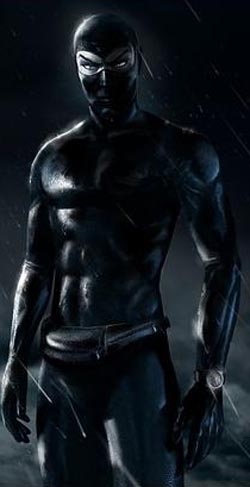
Religion: manifestly non-religious 
Name: Diabolik
Classification:
 lead character
lead character
Publisher(s): Astorina; Fox Kids; Saban
First Appearance: Diabolik #1 (1 Nov. 1962): "Il re del terrore"
Creators: Angela Giussani, Luciana Giussani
Super? (Has Super Powers/Special Abilities/Technology): Yes
Number of Appearances: 126
Comic Book Appearances: 82
TV, Film Appearances: 43
Video Game, Computer Game Appearances: 1
Enemy of: Inspector Ginko
Ally: Eva Kant
Occupation: criminal mastermind, thief
Nation: Italy
Gender: male
Note: has an intense love of jewels
Details from now-defunct webpage at http://pulpit70.110mb.com/fumetti_neri.htm:
The origine of Diabolik
Angela Giussani - the author of Diabolik was born in Milan. After a short career as a school teacher, Angela had entered the publishing realm. At first collaborated with the publishing house of her husband, then in 1961 opened one of her own together with her sister Luciana. After a debut with the comic strips about Americans boxer Big Ben Bolt, Angela persuaded her sister to create a their original work. Partners decided to create a pocket book easy to read in train, for the daily railroads commuters. In order to understand the tastes of this audience, Giussani made a market survey that found that many of them read yellow novels like Fantomas. Giussani decided that the protagonist of her comic strip should look similar to Fantomas. In her view this character should be brave, like the traditional positive heroes of the comics, but his energy and courage would be completely devoted to crime. Then the name "Diabolik" was choosed.
On November 1, 1962 the first number of Diabolik appeared in newspaper stands available for the price of 150 Lires. It was printed in the format of pocket brochure in black and white colors. Until this year comics were considered in Italy mainly as a childish reading, but Diabolik made birth to the new trend in comics creation that influenced deeply the minds of readers. As pictured in the first numbers, Diabolik is wealthy, handsome man. He drives a Jaguar and has a sophisticated laboratory where he crafts special tools that he frequently uses for his crimes. He kills easily, and does it with delight. In particular he likes strangling or poisoning his victims. He is always successful in performing his evil intentions and is always persecuted by police inspector Ginko, who never succeeds in catching him. Diabolik and his fiancee Eva Kant, when off duty, lead the quiet life of a middle class couple. They live in the hidden dwelling amidst some dull city suburb. The success of their stories was perhaps due to the mix of completely fantastic elements with the very accurate description of the time omens: fancy cars, fashionable garments, etc.
Fumetti neri in late 60s
Diabolik become the first and the most significant character of the Italian "Fumetti Neri" (black comics). He was heavily criticized by parents organizations and satirized in the press. In 1966, as a consequence of a big press campaign against violence in comics, Giussani sisters began to mild Diabolik stories. He began to kill only other criminals, and when possible he began to avoid to behave in this manner at all. Inspired by Diabolik fumetti industry produced many of it's imitations. Most famous among them "Kriminal" and "Satanik" was created by illustrator Roberto Raviola and writer from Milan Luciano Secchi, that signed their works as "Magnus & Bunker". They involved new elements of the genre and employed more elaborate graphic style.
Trying to explain "fumetti neri" phenomenon sociologists mention Italian post-war economic rush, growing importance of the middle class and it's life-style, and on the other hand: rapid pace of technological innovations that not always had a tranquilizing effect on the human being (like atom bomb and nuclear menace ). All these developments put in question the authority of traditional moral institutions, and among all produced demand for new stories - those capable to enchant the stressed mind of the modern man. Some says that the social function of "fumetti neri" was to help to the common reader to reevaluate moral values of contemporary society and not necessarily to abandon them.
The most common juxtaposition of the fumetti scenario was that of "criminal genius" against the figure of it's antagonist representing usually conventional social morale. The provocative nature of this juxtaposition was in that the evil was pictured as charming and attractive and was always defeating the good. This was completely new way of telling classic story of eternal struggle between "good and bad". Although ones new can not remain new forever. After enjoying thousands of stories about victorious evil, the public became bored from all this violence and in the late 70s "fumetti neri" gradually went out of fashion.
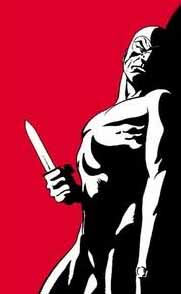
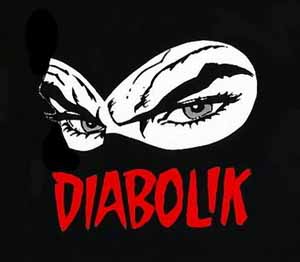

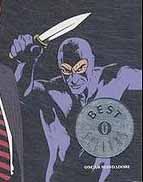
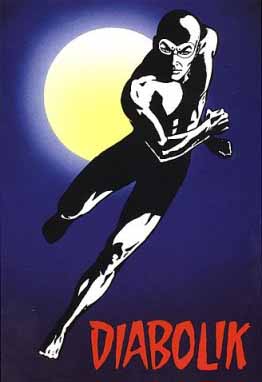

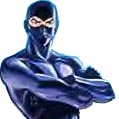
 Diabolik #1 (1 Nov. 1962): "Il re del terrore" (lead character)
Diabolik #1 (1 Nov. 1962): "Il re del terrore" (lead character)
Suggested links for further research about this character and the character's religious affiliation:
- http://en.wikipedia.org/wiki/Diabolik
- http://www.comicvine.com/diabolik/29-18770/
- http://www.diabolik.it/
- http://www.internationalhero.co.uk/d/diabolik.htm
- http://www.imdb.com/character/ch0035230/
- http://en.wikipedia.org/wiki/Danger:_Diabolik
- http://www.imdb.com/title/tt0062861/
- http://www.imdb.com/title/tt0061037/
- http://www.imdb.com/title/tt0466510/
- http://www.comicvine.com/diabolik-il-re-del-terrore/37-167578/
- http://www.dazeddigital.com/ArtsAndCulture/article/4452/1/A_Life_Less_Ordinary_Diabolik_and_Eva_Kant
- http://tvtropes.org/pmwiki/pmwiki.php/Main/Diabolik